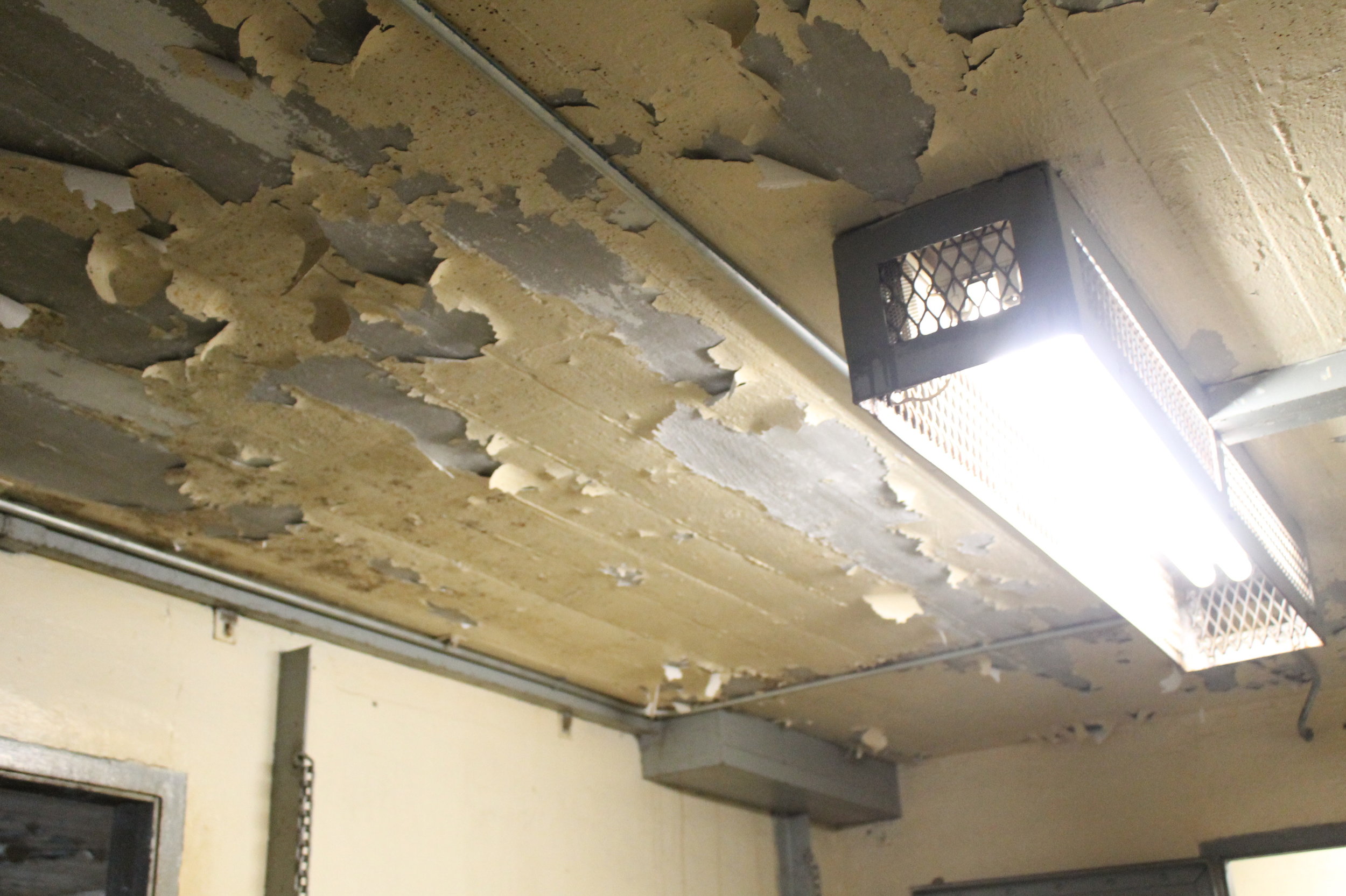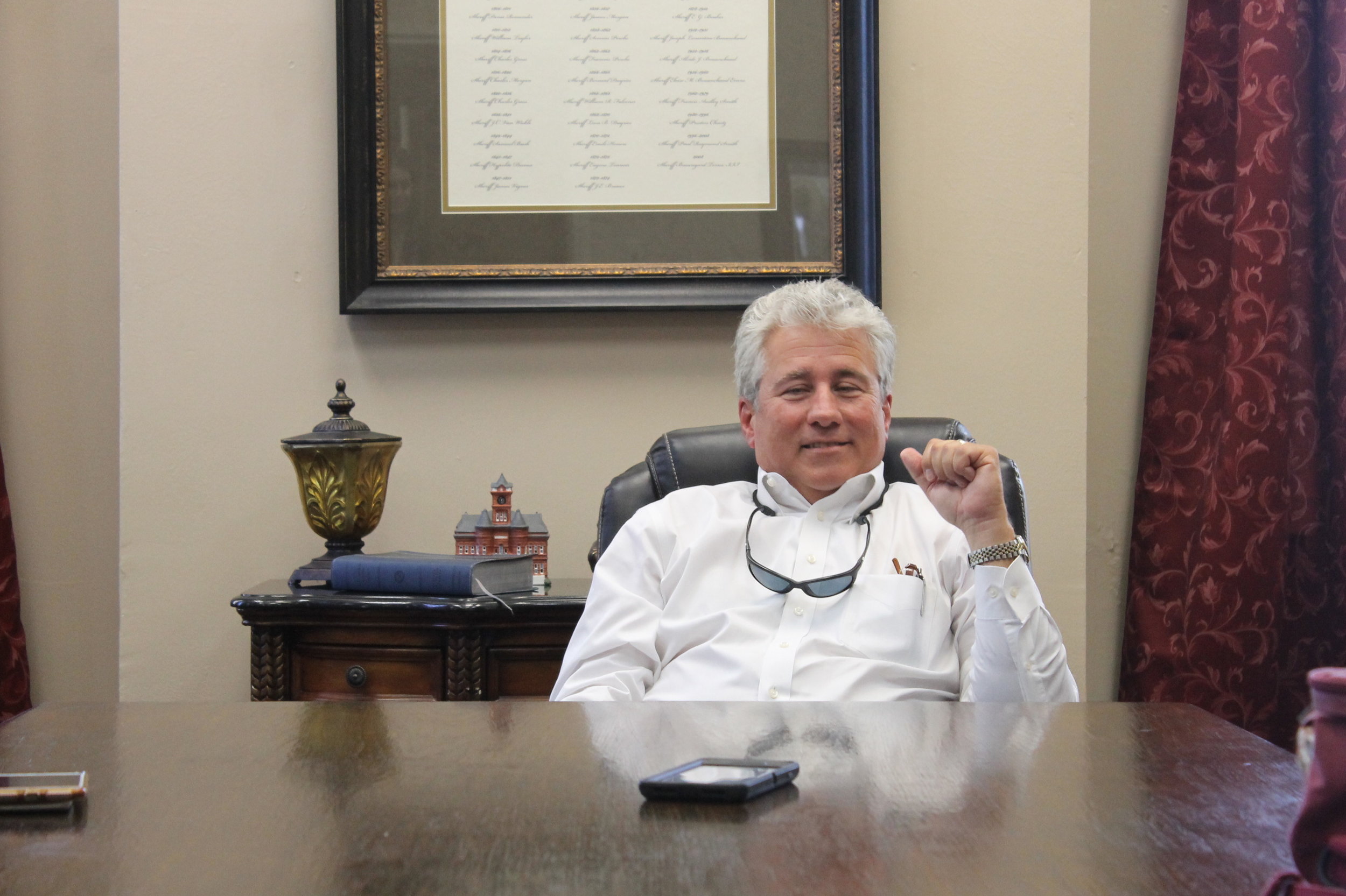For seminar one morning, Andrew asked us to create a list of characteristics that we felt defined New Orleans.
“Exhibited”
“Contained”
“Reconstructed”
“Historic”
The list continued on till we had arrived at approximately fifty adjectives-most of which contradicted each other. Is it possible for a city to not only be self aware but to also be chaotic? Could New Orleans be celebrated and displaced? For me, these contradictions became overwhelming and apparent during my time in Baton Rouge. We would spend the morning touring a holding cell for prisoners but by the afternoon, we were comfortably sitting in a conference room, listening country songs from the singing sheriff’s Spotify. We would spend seminar discussing what defines humanity and contemplating questions about how we receive love before lounging on a boat and looking at the riverfront houses that lined either side. We toured the capitol and learned about Huey Long’s murder before speculating whether or not a pencil had actually gotten stuck in the Senate ceiling.
In A Lesson Before Dying, the driving plot of the book is a school teacher Grant, who is asked to teach Jefferson how to be a man before he is executed for being falsely accused for robbery and murder. Grant’s aunt is insistent that Jefferson must be a man when he is executed, rather than the ‘hog’ that society has made him out to be. However, there is a complex irony in trying to teach a man how to live like a man when he is about to face his death. This book has vivid moments of love and happiness that are followed by stark descriptions of Jefferson’s jail cell and Grant’s inability to grapple with his own experiences in the south. This mimics Southern Louisiana’s ability to have a history that has immense tragedy alongside a celebration of life and happiness. For me, having both emotionally moving and emotionally freeing experiences existing in the same place, one shortly after the other, emphasizes the truth behind what it means to be human. We live in a world where we are laughing at memes while also reading headlines about wars around the world.
Additionally, I think seeing the prison cells helped me to put into perspective Jefferson’s experiences in A Lesson Before Dying. Several impactful scenes in the book do take place within the small prison cell, where Dr. Gaines describes the cramped quarters and the sound of the Jefferson’s chains. The cells that we were able to see in Pointe Coupee Parish are no longer in use. They are upstairs in the sheriffs’ office and are strictly used for storage purposes. Each one of the cells was filled with boxes and boxes of old files and cases that no longer had a home downstairs. Even with the files, I could still imagine what the prison could have been like. There was an eerie feeling within each cell that was enhanced by the peeling paint, the small notes written on the walls inside and the sound of all four cell doors closing. Despite no longer being in use, the prison felt lived in. It was not impossible to imagine the people who would have had to stay in lock down or who would have glanced up at the large brick clock that stood just above their recreational space.
Once leaving the prison, we went downstairs to see the court house and had a chance meeting with the sheriff. He had come in from work to find all of us observing the old pictures and documents that were placed on the walls of the Sheriff’s conference room. Tammy, delighted to give us the best tour she possibly could, sat him at the head of the table to talk to all of us. Within the novel, the sheriff is cold, abuses his power and is unsympathetic to Aunt Emma’s cause. He often expects for Jefferson to adhere to the racist hierarchies that have been set in place for hundreds of years. He is the anti-hero. However, Sheriff Torres comes across as being Sheriff Guidry opposite. He is a charming southern man who can trace his ancestry all the way back to their first voyage to Louisiana. His family has stayed here, planted roots here and grown up here. He smiles often, attends to us as though we are the only people on his mind and cracks jokes in the middle of his stories. To add to the Southern charm, he enjoys singing country music and has been recording songs in Nashville-some of which he plays for us. They are wholesome country songs about love, women and the South. He brings a smile to all of our faces but it is a rushed change in emotion after experiencing the prison. It reminds me of an exhibit that we saw on Hurricane Katrina back in New Orleans-within the exhibit, there was a section that addressed the reactions of the community following the storm. Despite pulling up to garage doors that had been notes spray painted on by search and rescue teams or seeing the damage inflicted on their homes on TV before they were even able to see it themselves, the town still had a fashion show that re-purposed blue tarp to create clothing and they still held comedic signs that allowed people to laugh in the face of tragedy. This city has a powerful resilience that I believe is specific to their own community. They are able to grapple with happiness and tragedy in a truly admirable way that allows both emotions to exist side by side. There is not an expectation that tragedy must end before happiness can begin, instead, happiness exists alongside tragedy.



